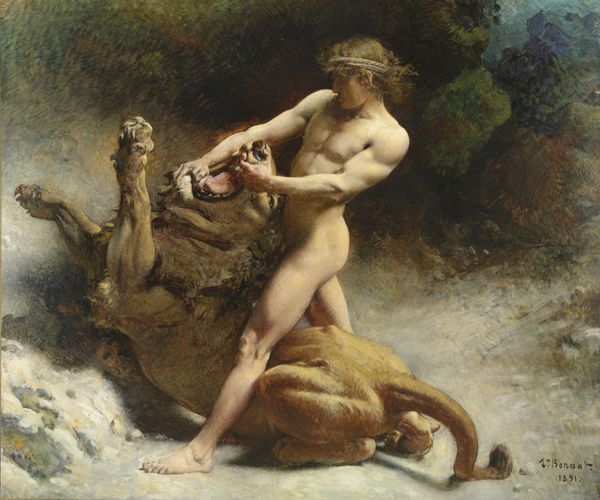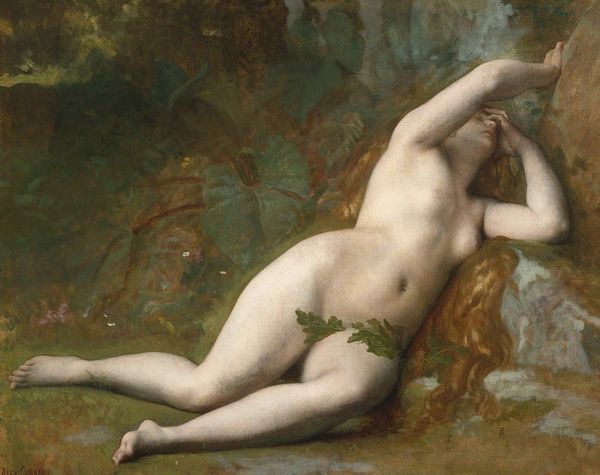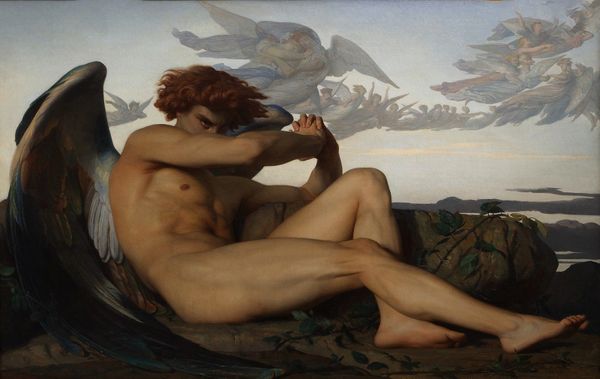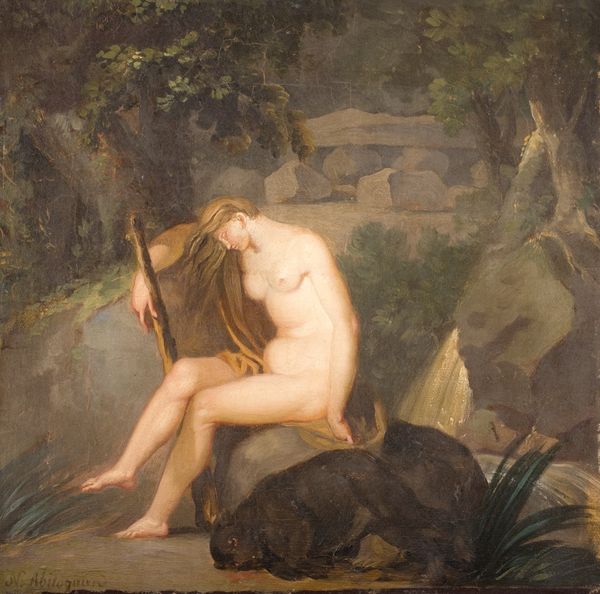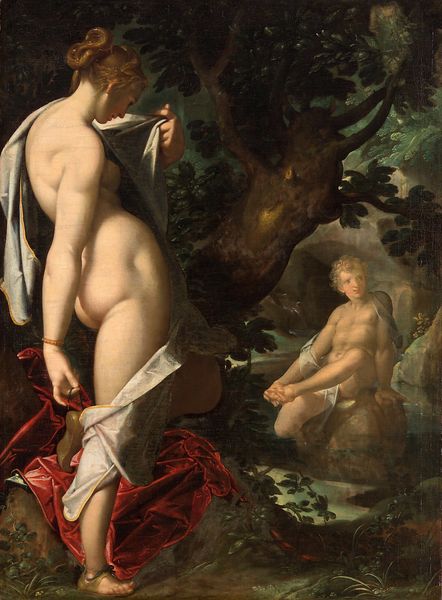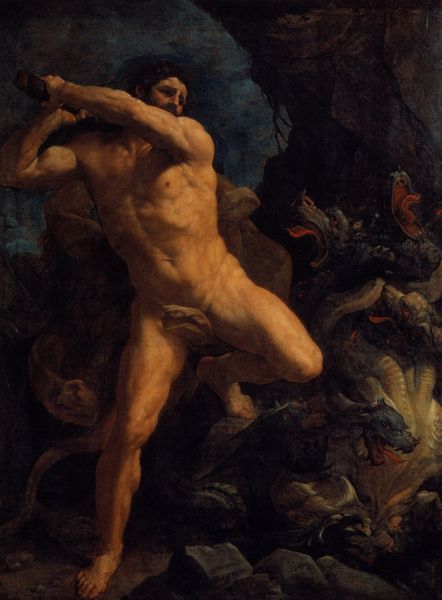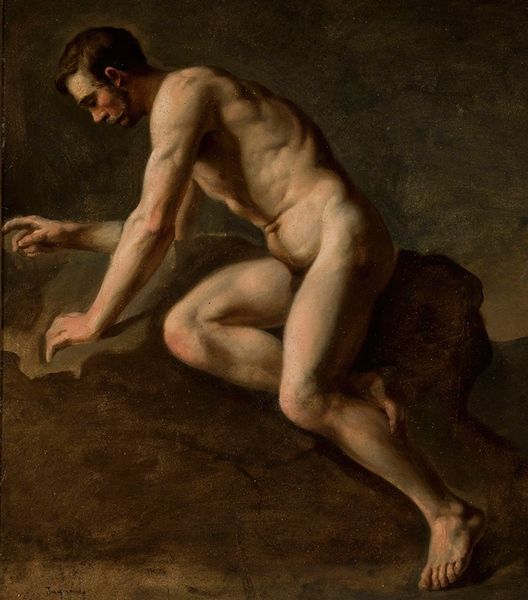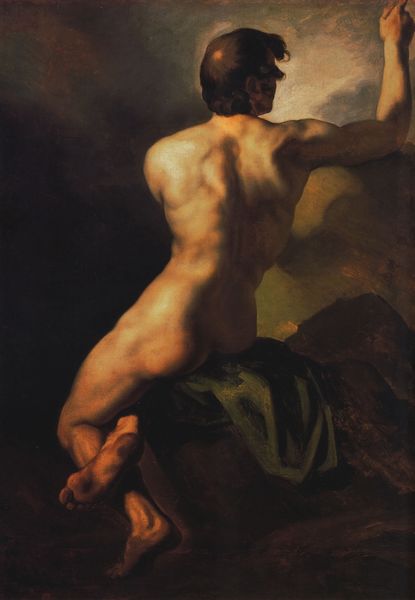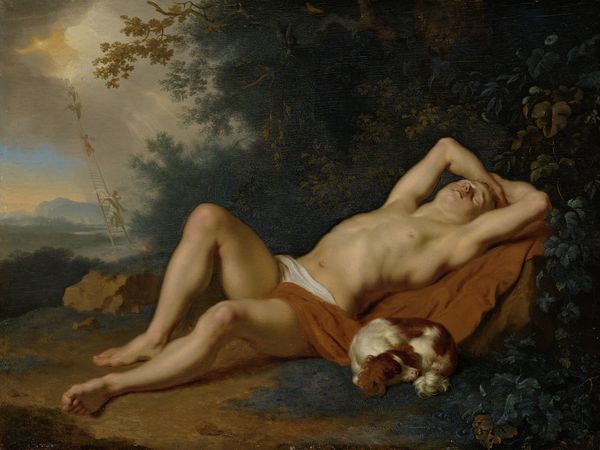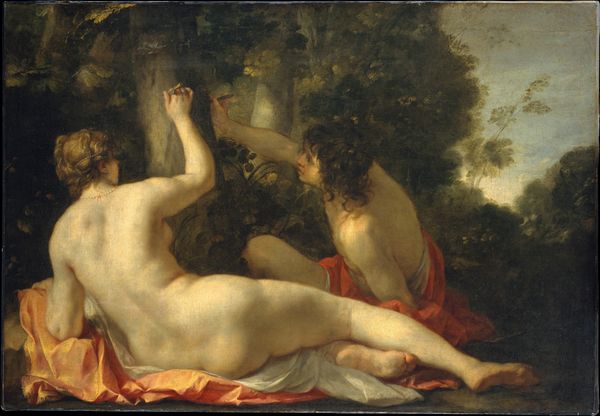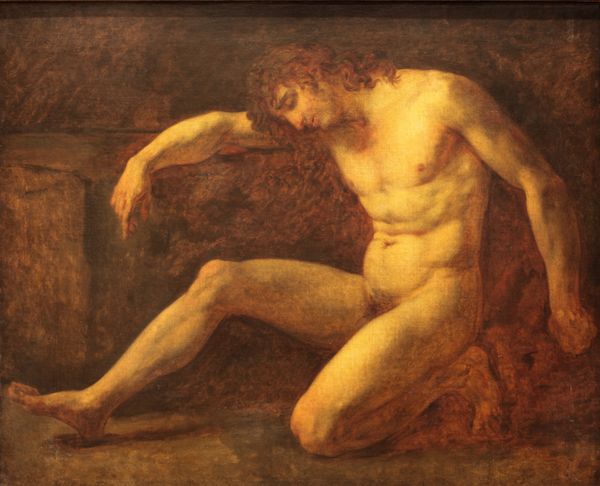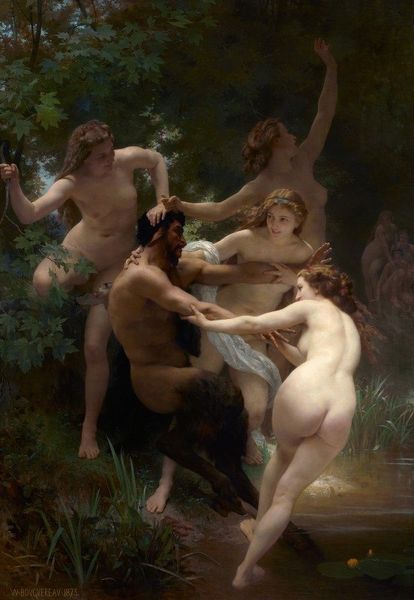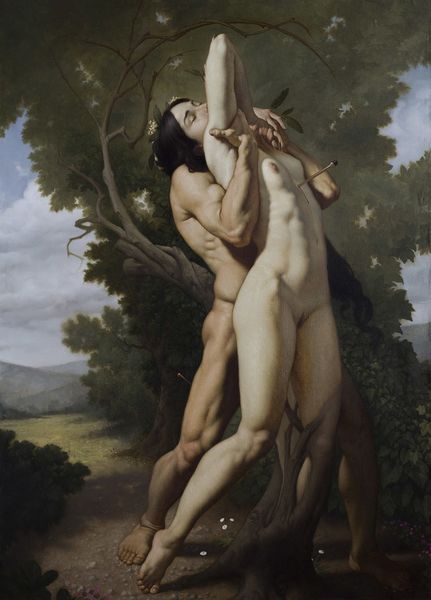
Dimensions: 123 cm (height) x 175.5 cm (width) (Netto), 132.6 cm (height) x 182.6 cm (width) x 5.7 cm (depth) (Brutto)
Nicolai Abildgaard painted The Wounded Philoctetes in oil on canvas, though we cannot be certain when. The image draws on the Greek myth of Philoctetes, abandoned on an island because of a festering wound. Abildgaard paints Philoctetes as a neo-classical hero, a man stripped bare by suffering. We might consider what it meant to paint the male nude in the late eighteenth century. In many European academies, life drawing from the male nude was the foundation of artistic training, but here the artist draws on this tradition to expose the cost of the heroic ideal. Abildgaard was the director of the Copenhagen Academy, so he knew this world intimately, and in this image, he appears to question the cost of that artistic and social order. What does it take to uphold society’s ideals? As historians, we can research the visual codes and political events that shape artistic production. By digging into archives, we can understand not just what the artist painted but also why. Art always reflects the social and institutional contexts in which it’s made.
Comments
statensmuseumforkunst almost 2 years ago
⋮
Confined within the image, naked and screaming, Philoctetes is cradling his wounded foot. According to mythology he had been betrayed by his fellow Greeks as they travelled towards war in Troy; they left him behind on the island of Lemnos because he posed a danger to morale after a snakebite to his foot prompted him to scream incessantly. Here, Abildgaard has painted one of the most overtly homoerotic pictures within Danish art history. Note, in particular, Philoctetes' pert behind poking out. Even his scream recedes into the background compared to his buttocks, which are almost coming out of the canvas, pressed forward by the narrow space behind the figure. The ancient, masculine hero is in a state of powerlessness. The painting can be regarded as a critical message to the homosexual art aficionado J.J. Winckelmann, who believed that in Greek art there are only quiet sighs, no screams.
Join the conversation
Join millions of artists and users on Artera today and experience the ultimate creative platform.
statensmuseumforkunst almost 2 years ago
⋮
Homer's lliad tells the story of the Greek warrior Philoctetes. While leading the Greek army to the sacrificial altar on the small island of Chryse, he was bitten in the foot by a serpent guarding the sacred place. The wound would not heal. Philoctetes' cries of pain and the stench arising from his wound became unbearable to his fellow soldiers, who left him on the island of Lemnos. Ten years would pass before he was retrieved by Odysseus. Philoctetes' naked body is like a single muscle contracting in pain. The body fills out the entire picture plane from top to bottom as if straining to break it asunder. His left hand grabs his right knee, and all of the forces inherent in the painting coalesce around the right hand cradling the wounded foot. The motif is unusual, but with this painting the artist entered into a central discussion of the period: the question of whether art should express the classical ideals regarding noble simplicity and silent greatness, or whether it should express strong emotion. The much-learned Abildgaard was clearly in favour of the latter position.
statensmuseumforkunst almost 2 years ago
⋮
From 1772 Abildgaard spent five years in Rome thanks to a scholarship granted by the Royal Danish Academy of Fine Arts in Copenhagen. It was while in Rome that he created this depiction of the legendary hero Philoctetes, whose screams of pain caused by a festering snakebite made his comrades-in-arms abandon him on a Greek island during the Trojan war.Challenging neoclassicismThe dominant and deeply rooted movement within figure painting at this time was neoclassicism with its emphasis on self-command and calm. Abildgaard challenges this pattern with his depiction of a body convulsively curved around an axis of pain; a body that feels like it is forcefully restrained within the picture field with its tense musculature and twisted limbs.Avantgarde, pathos and WeltschmerzThe 1770s brought with them an increased emphasis on grand passions among the Northern European ”avant-garde”, and this new outlook also left its mark on Abildgaard’s circles in Rome. The interest in pathos and Weltschmerz is clearly evident in his works from this era.In this case he used a principal work of classical sculpture as the basis for his rendition of Philoctetes’ tormented state: The Torso Belvedere in the Vatican museum served as the model for the plastic and mannered rendition of the hero’s upper body. With this move, Abildgaard’s stylistic innovation was imbued with features of a work canonised by neoclassicism – without, however, reducing the tensions in the painting.
statensmuseumforkunst almost 2 years ago
⋮
Tremendous force, energy and piercing pain infuse Abild¬gaard’s depiction of the wound¬ed Greek hero Philoctetes. He was travelling to Troy with a contingent of Greek soldiers, but was bitten by a snake and left behind on the island of Lemnos, screaming. The Greeks eventually return¬ed for Philoctetes, as he was the owner of Heracles’ bow, which always hit its target. Abildgaard, who created this painting in Rome, wished to demonstrate his standpoint in the ongoing international debate on the idioms and devices of art. He favoured strong expression in art. At the same time he wished to show the professors at the Royal Academy of Fine Arts in Copenhagen his skill, proving that he was qualified to create art for the Christiansborg Palace. The painting won great acclaim, but must also have seemed shocking at the time.
